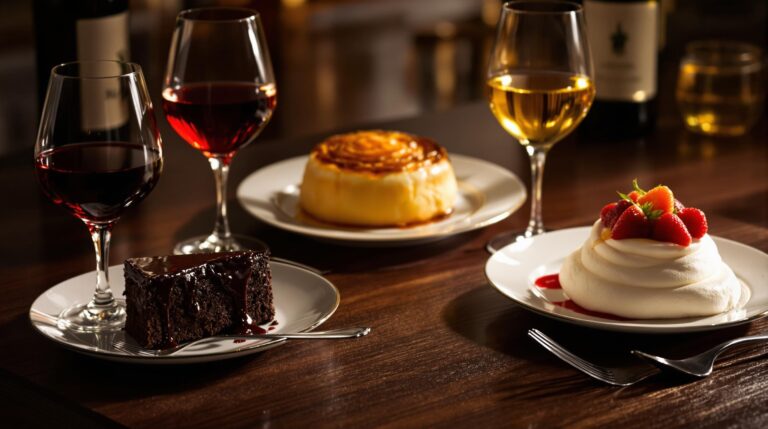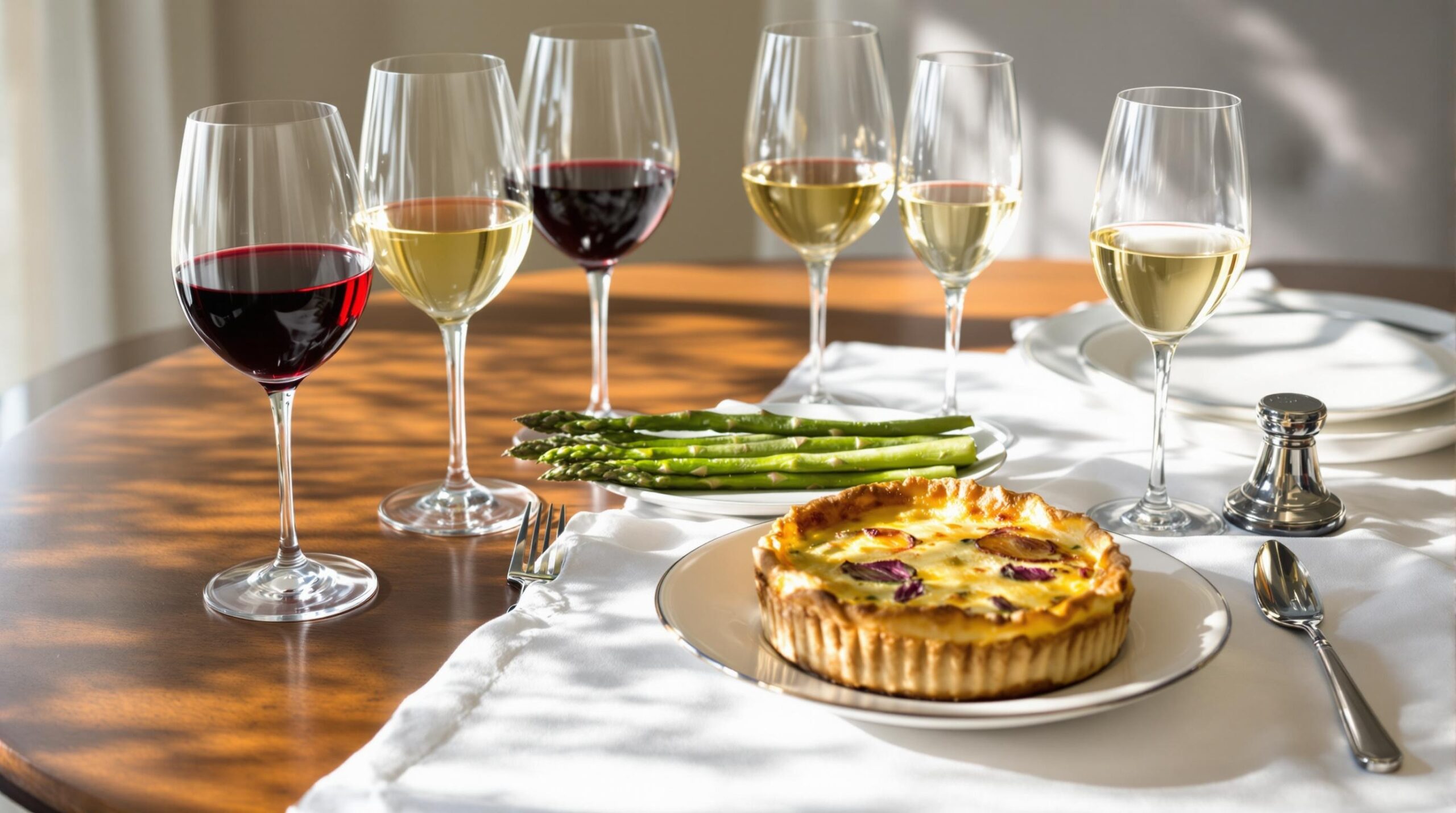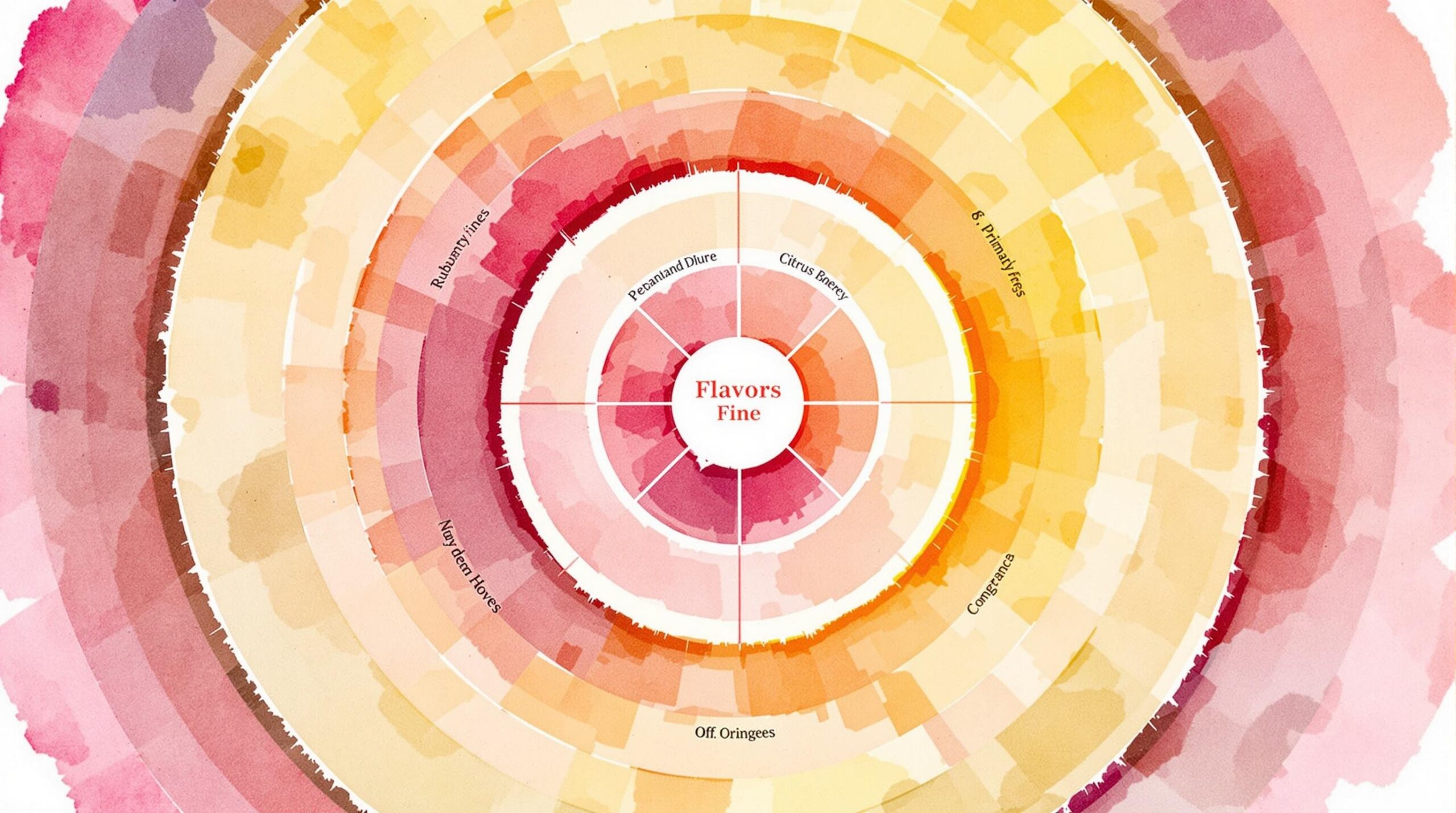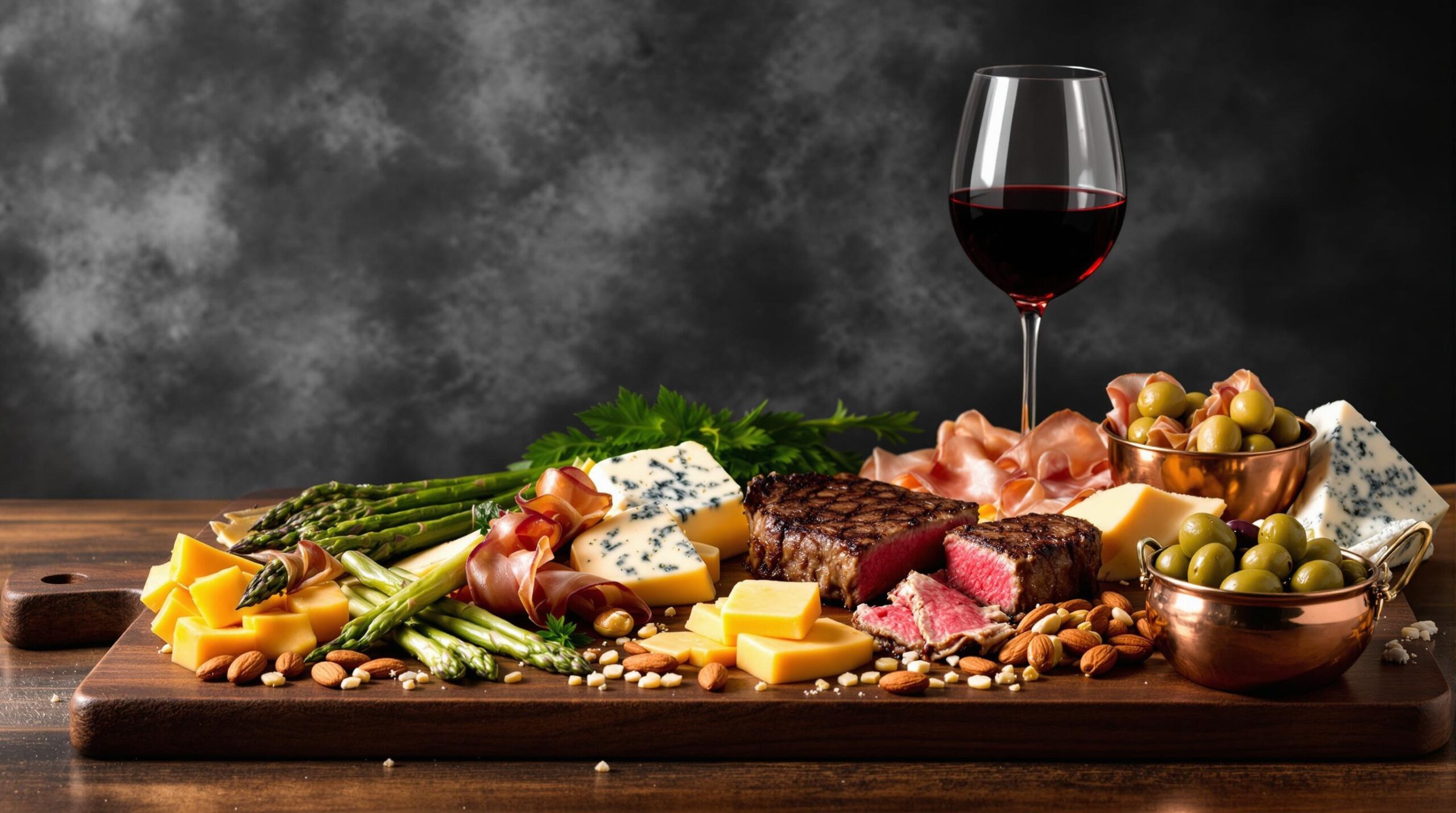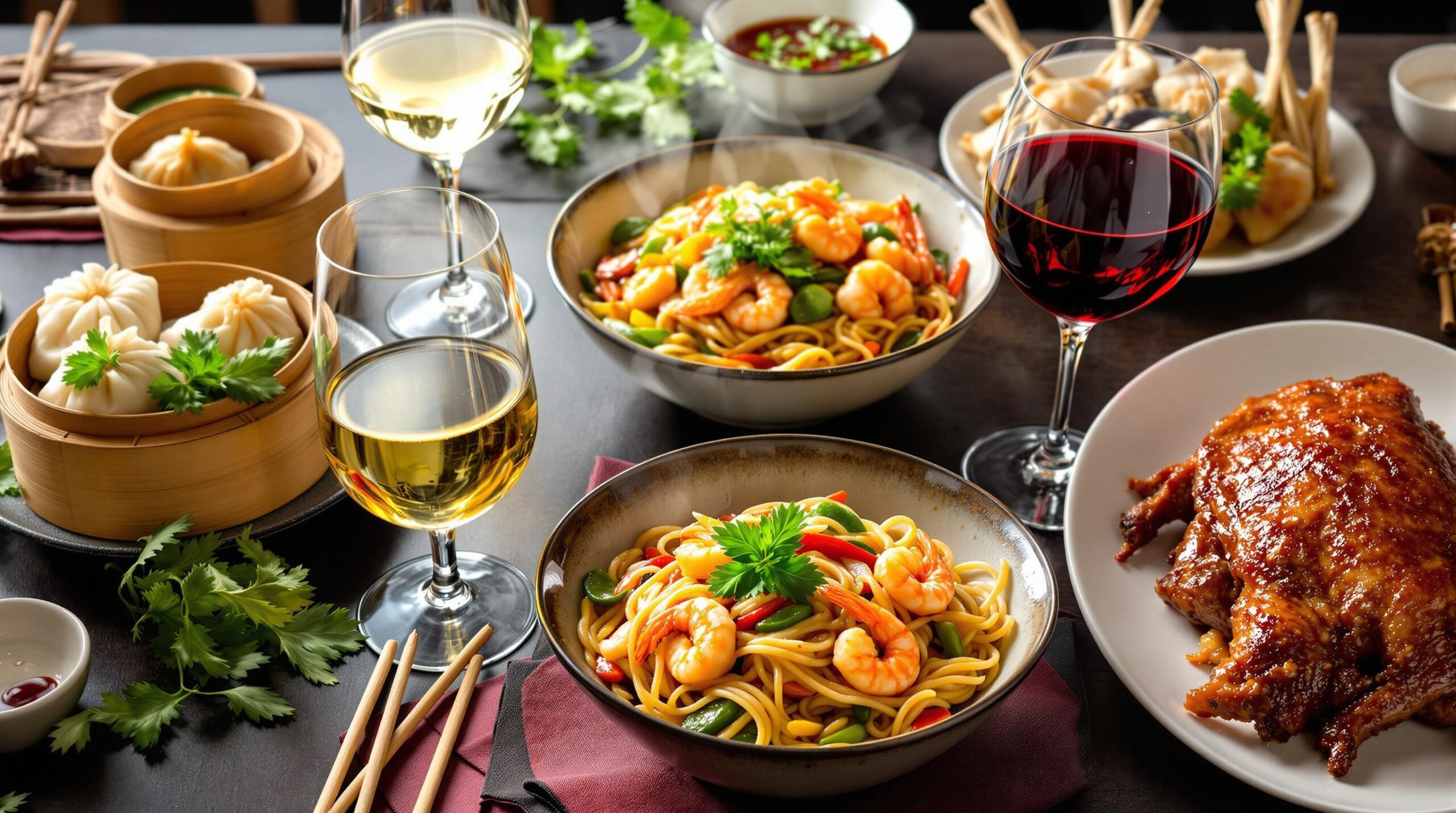Matching wine with desserts takes your after-dinner experience from good to memorable. The right pairing enhances both the wine and dessert flavors, creating perfect harmony on your palate. This quick guide helps you master dessert and wine pairing basics for both casual dinners and special occasions.
Key Principles of Dessert and Wine Pairing
The golden rule of dessert wine pairing is that your wine should be sweeter than your dessert. Otherwise, the dessert makes the wine taste bitter or tart.
- Match flavor intensities
- Consider acidity levels
- Think about texture compatibility
- Look for complementary or contrasting flavors
Classic Dessert Wines and Their Dessert Partners
Different dessert wines pair naturally with specific types of sweets.
| Wine Type | Best Dessert Matches |
|---|---|
| Port | Chocolate desserts, pecan pie |
| Sauternes | Crème brûlée, fruit tarts |
| Ice Wine | Light fruit desserts, pavlova |
Common Pairing Mistakes to Avoid
Temperature matters when serving dessert wines. Serve them too cold, and you’ll miss their complex flavors.
- Serving red wine with chocolate without considering sweetness levels
- Pairing dry wines with sweet desserts
- Overlooking the impact of dessert temperature on wine taste
Everyday Pairing Solutions
Simple wine selections work great for home desserts without breaking the budget. Focus on versatile options that pair well with multiple dessert types.
- Moscato d’Asti with fruit-based desserts
- Ruby port with chocolate cake
- Late harvest Riesling with apple pie
Budget-Friendly Alternatives
| Instead of | Try This | Best With |
|---|---|---|
| Sauternes | Muscat de Beaumes-de-Venise | Custards, vanilla-based desserts |
| Vintage Port | Late Bottled Vintage Port | Dark chocolate, nuts |
Seasonal Pairing Guide
Match your dessert wines to seasonal treats for the best experience. Adapt your selections to both the weather and seasonal ingredients.
- Spring: Light wines with berry tarts
- Summer: Chilled moscato with fruit-based desserts
- Fall: Port with apple and pumpkin treats
- Winter: Rich dessert wines with chocolate and spice
Starting Your Collection
Begin with three to four versatile dessert wines that cover different sweetness levels and styles. Store them properly to maintain quality.
Essential Starter Wines
- One bottle of tawny port
- One bottle of moscato
- One bottle of late harvest wine
Store dessert wines in a cool, dark place between 55-65°F (13-18°C). Most will keep for several weeks after opening if properly stored.
Serving Tips for Success
Perfect your dessert and wine service with these practical tips. Focus on temperature and timing for the best results.
- Serve whites at 45-50°F (7-10°C)
- Serve reds at 60-65°F (16-18°C)
- Pour dessert wines in 2-3 oz servings
- Wait 15-20 minutes after opening before serving
Use proper dessert wine glasses when possible, but small white wine glasses work well for home service.
FAQs: Wine and Dessert Pairing Guide
What’s the basic rule for pairing wine with desserts?
The wine should be sweeter than the dessert to avoid making the wine taste bitter. A good starting point is to match the wine’s intensity with the dessert’s sweetness level.
Which wine goes best with chocolate desserts?
Port wine pairs exceptionally well with dark chocolate desserts. For milk chocolate, try a Ruby Port or Banyuls. White chocolate works beautifully with Moscato d’Asti.
What’s a good wine choice for fruit-based desserts?
Light, sweet wines like Sauternes or Riesling complement fruit tarts and pies. The wine’s natural acidity balances the fruit’s sweetness while enhancing its flavors.
Can I serve sparkling wine with dessert?
Sweet sparkling wines like Moscato d’Asti or Demi-Sec Champagne pair wonderfully with light desserts. They’re especially good with fresh berries or cream-based treats.
What wine works with vanilla-based desserts?
Late-harvest wines or cream sherry complement vanilla-forward desserts like crème brûlée or vanilla bean ice cream. The caramel notes in these wines enhance vanilla flavors.
How should I pair wine with caramel desserts?
Tawny Port or Pedro Ximénez Sherry match well with caramel desserts. Their nutty, caramel notes create harmony with similar flavors in the dessert.
What’s the ideal serving temperature for dessert wines?
Serve most dessert wines slightly chilled, between 45-55°F (7-13°C). Port can be served slightly warmer at 60-65°F (15-18°C).
Which wine pairs well with cheesecake?
Ice wine or late-harvest Riesling complement classic cheesecake. For chocolate cheesecake, consider Ruby Port or sweet Madeira.
Can I serve red wine with dessert?
Regular red wines typically don’t pair well with desserts. Opt for fortified red wines like Port or sweet reds like Brachetto d’Acqui instead.
What’s a versatile dessert wine for multiple desserts?
Moscato d’Asti is incredibly versatile. Its light sweetness, low alcohol, and subtle bubbles pair well with fresh fruit, light cakes, and cream-based desserts.
Quick Tips for Perfect Dessert Wine Pairings
– Match intensity levels: Light desserts need light wines; rich desserts need fuller-bodied wines
– Consider texture: Creamy desserts pair well with silky wines
– Think about temperature: Serving temperatures affect both wine and dessert flavors
– Watch the sugar levels: Always ensure the wine is sweeter than the dessert
– Pay attention to portion size: Serve dessert wines in 2-3 oz portions
– Look for complementary flavors: Caramel notes in wine enhance caramel desserts
Common Pairing Mistakes to Avoid
– Serving dry wines with sweet desserts
– Overlooking temperature guidelines
– Pouring full-sized wine portions
– Pairing delicate desserts with intense wines
– Serving dessert wines too cold, which mutes their flavors

